Teaching English Certificate in Secondary English Language Teaching

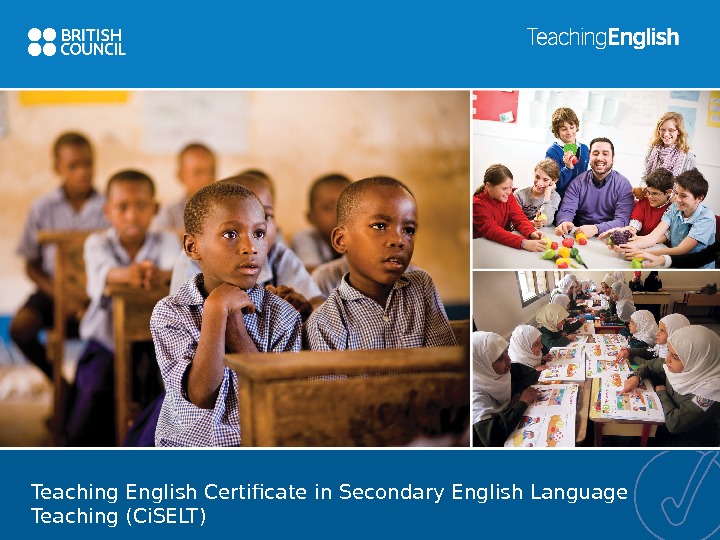
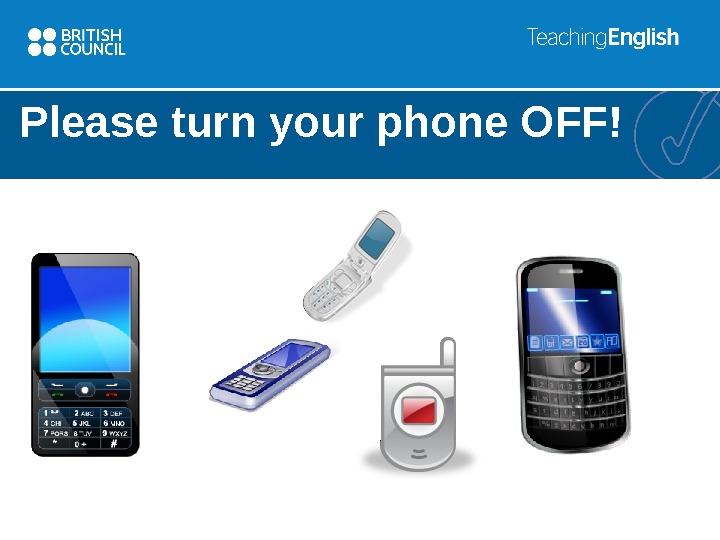
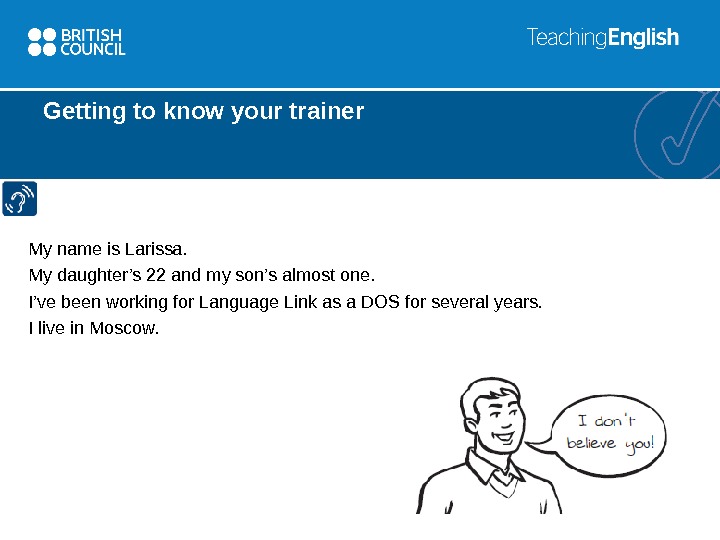
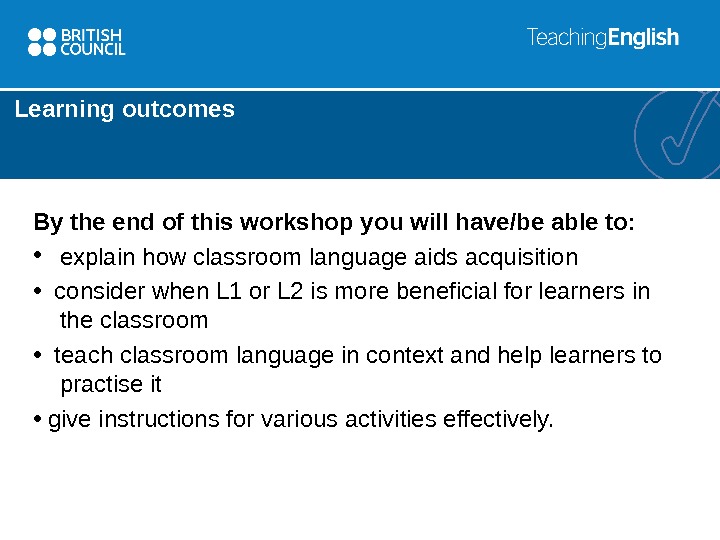
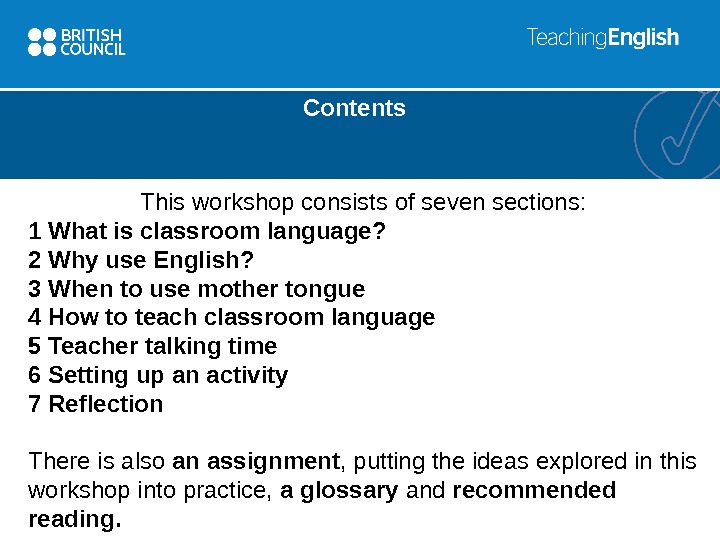

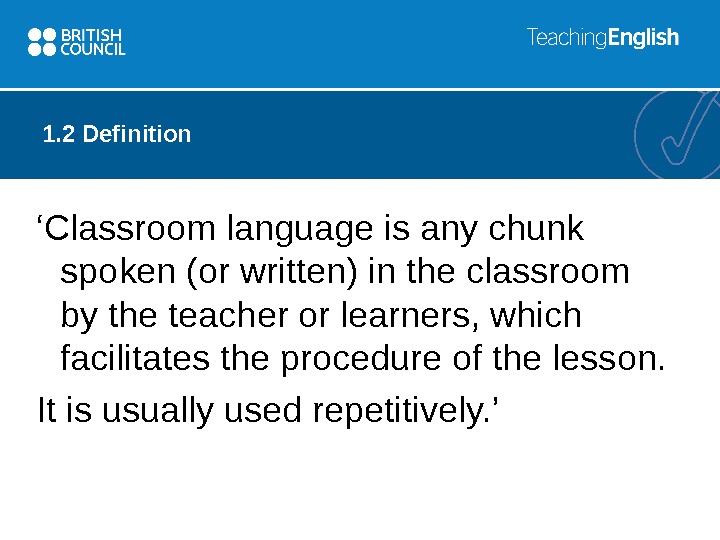
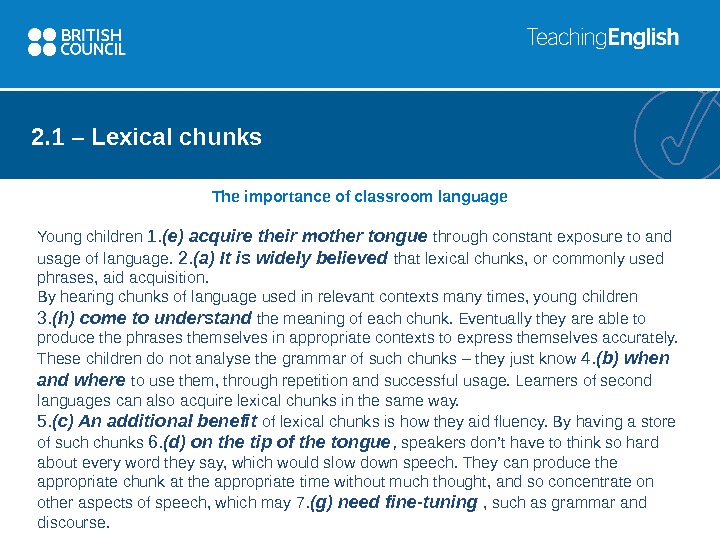
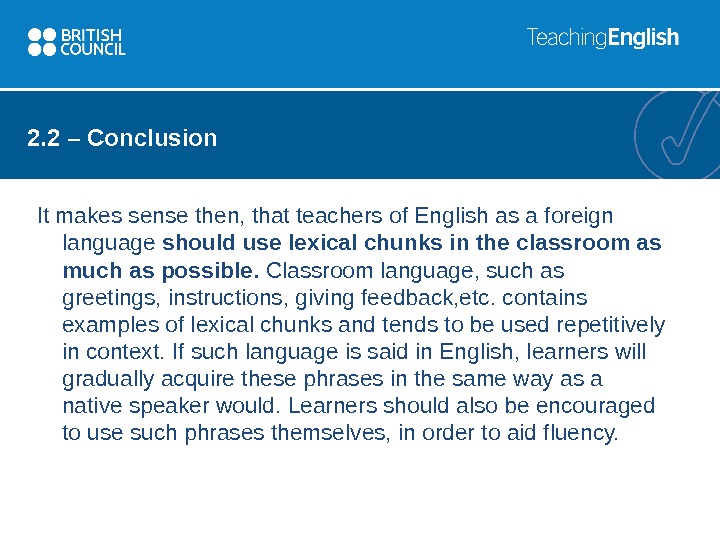
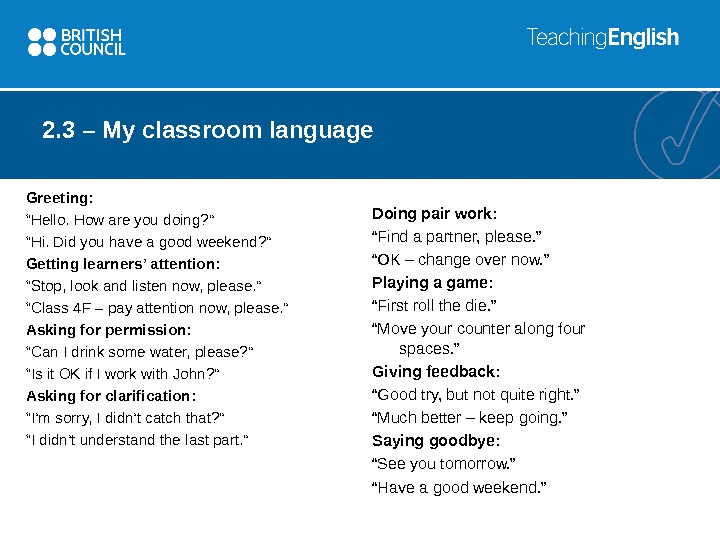
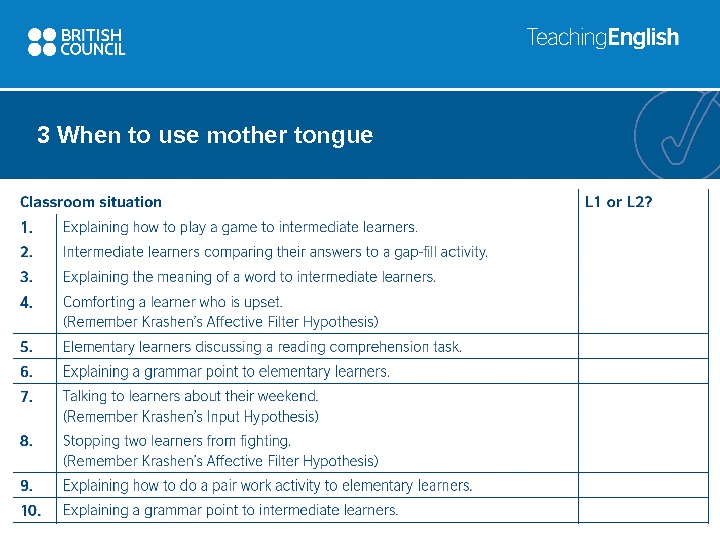
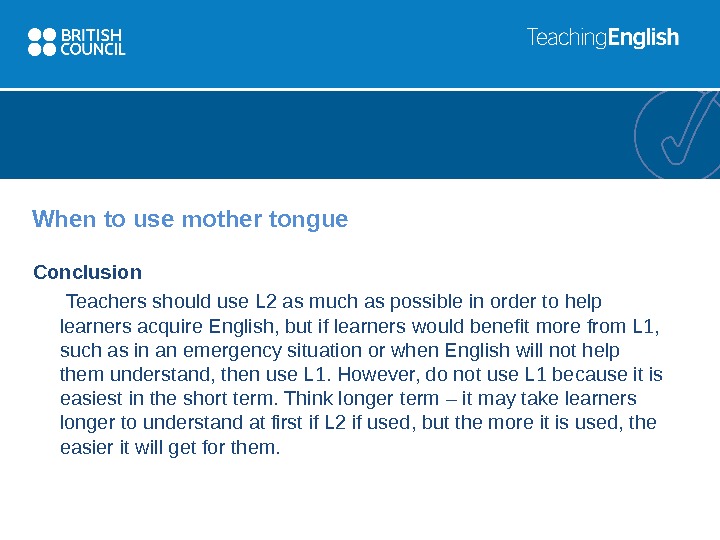
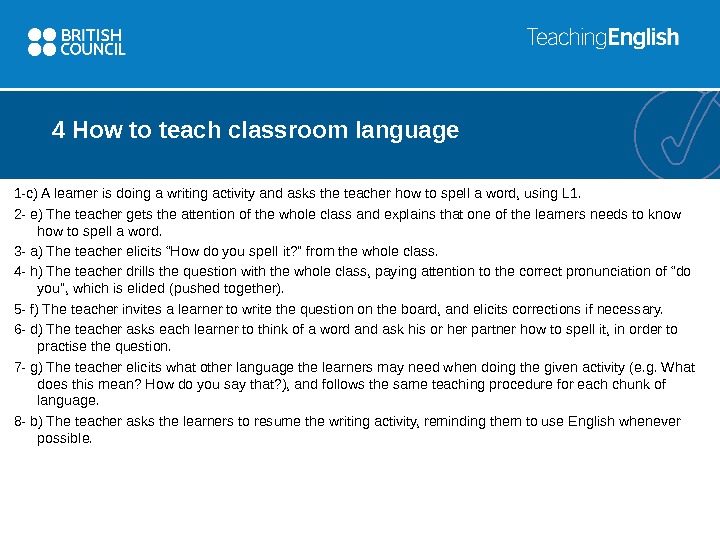
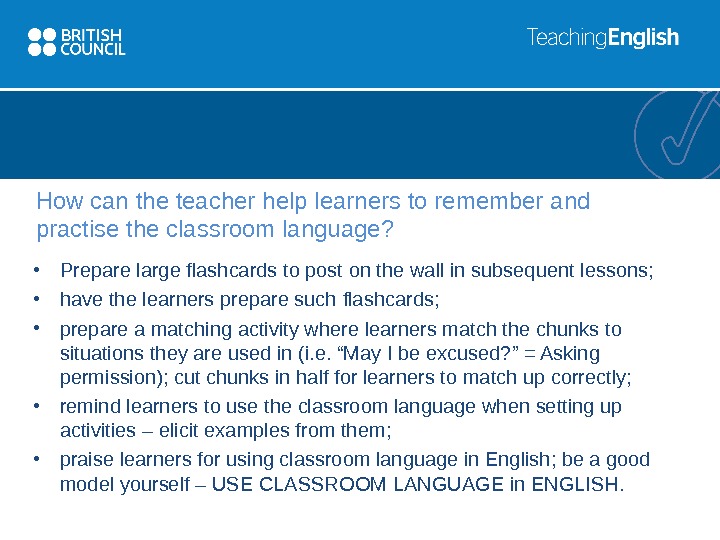
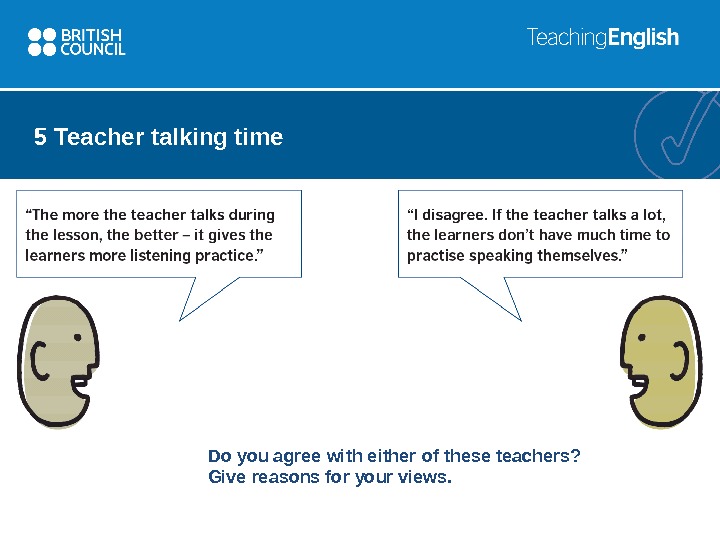
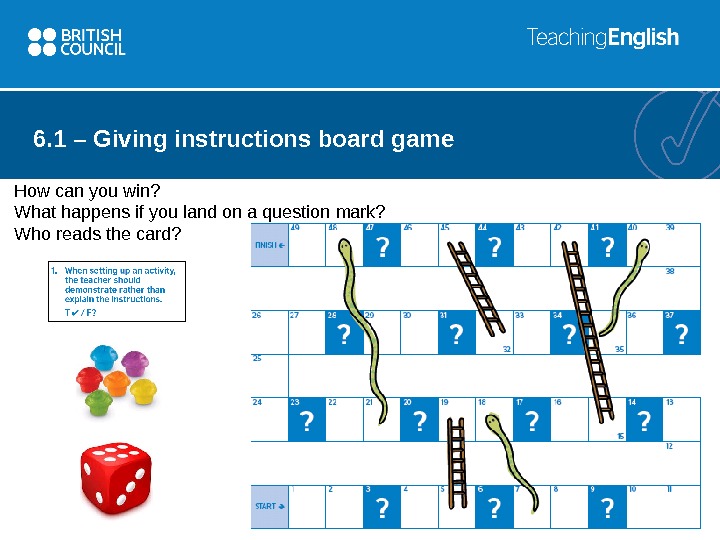
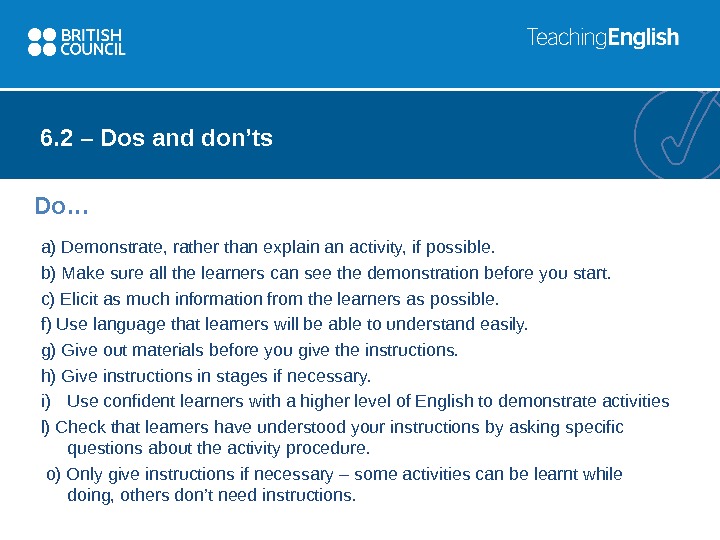
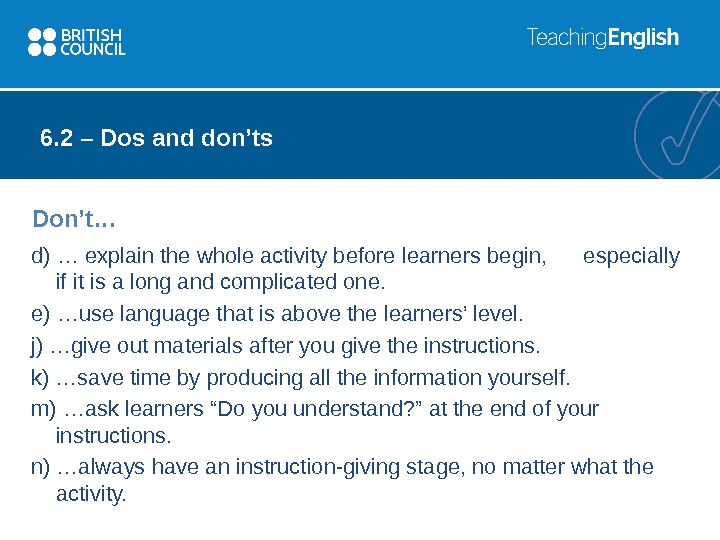
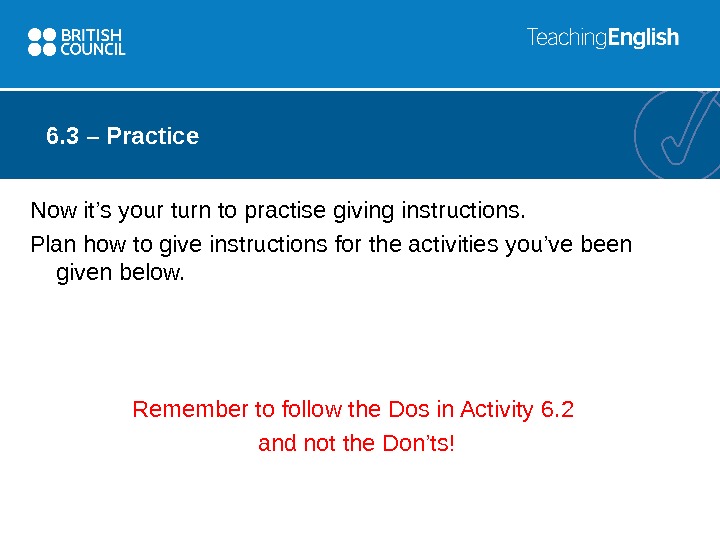
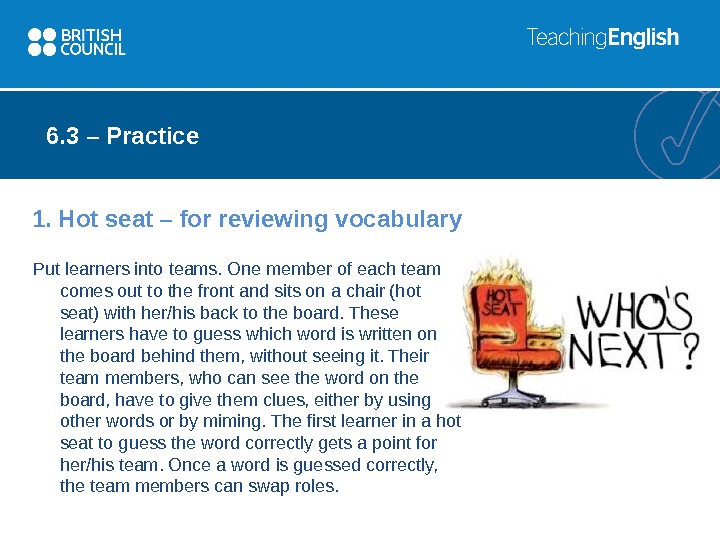
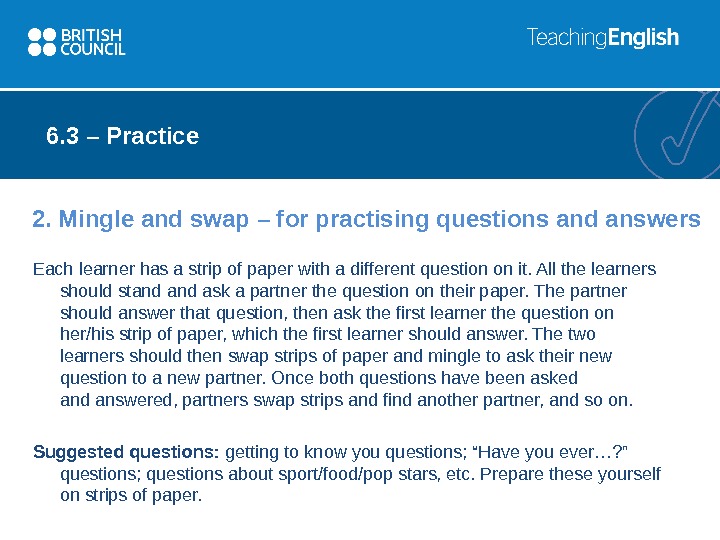
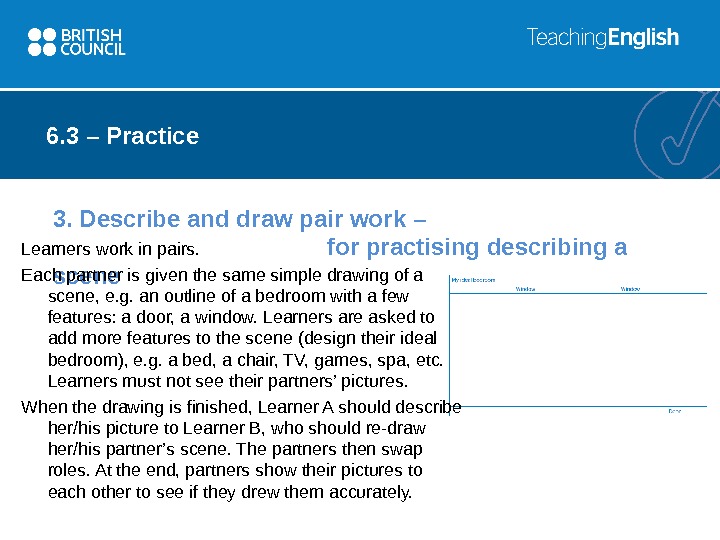
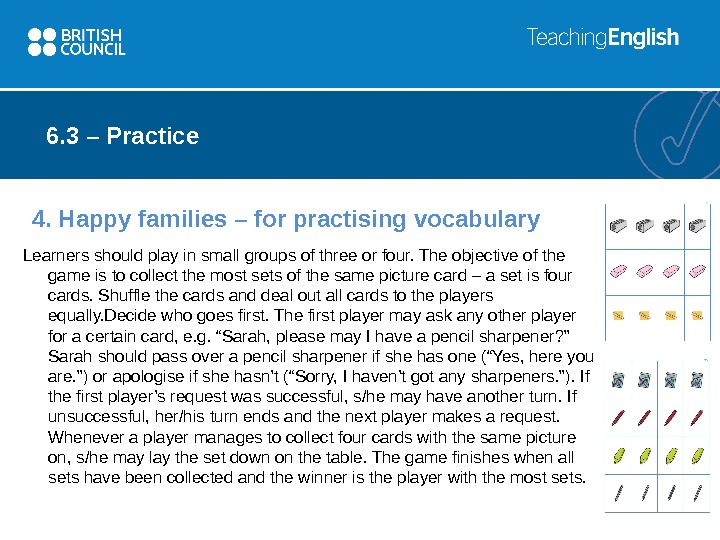
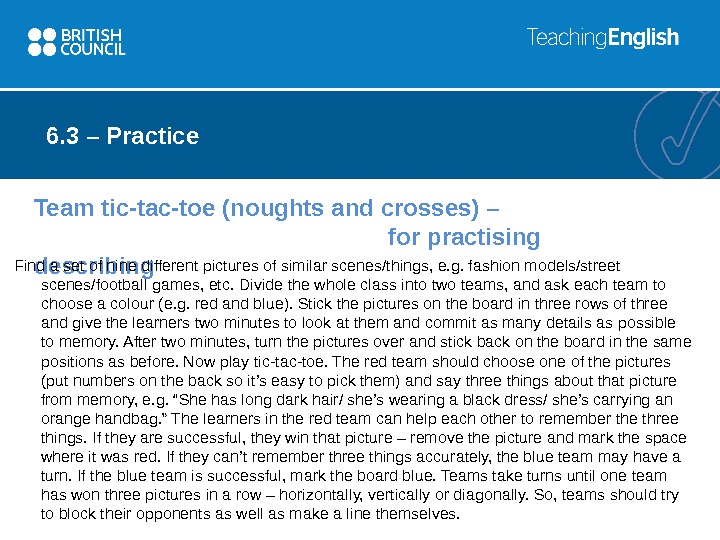
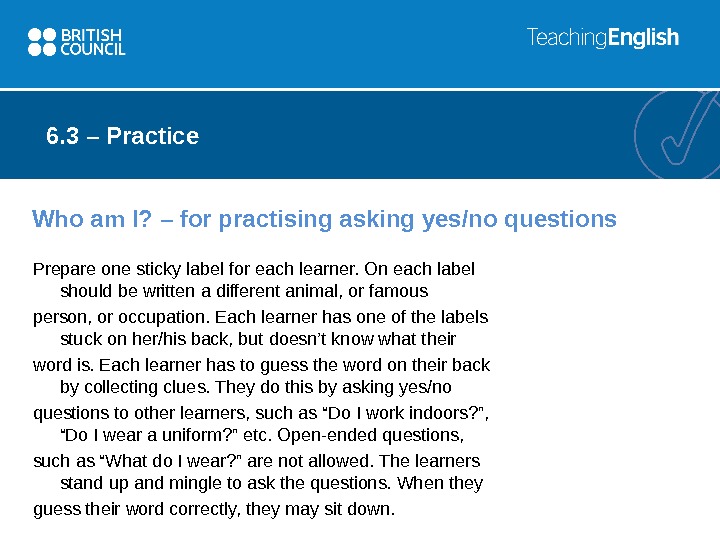
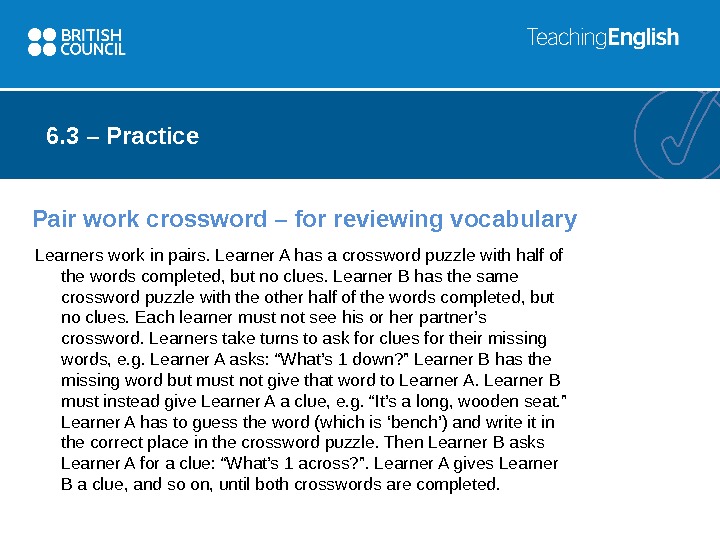
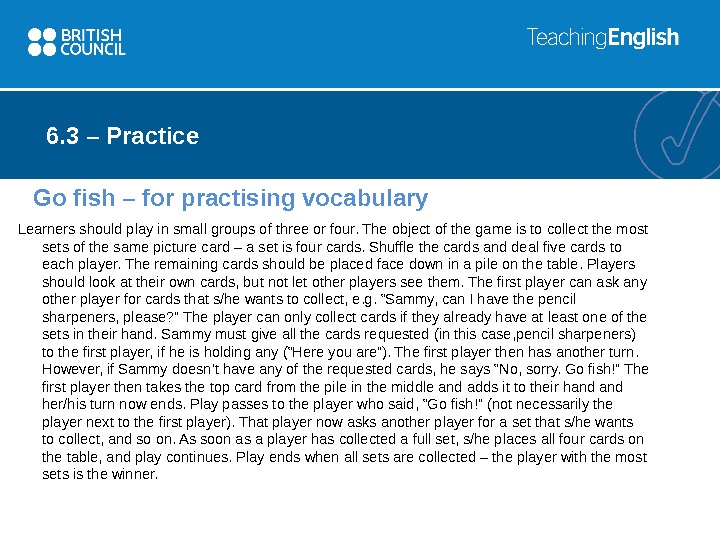
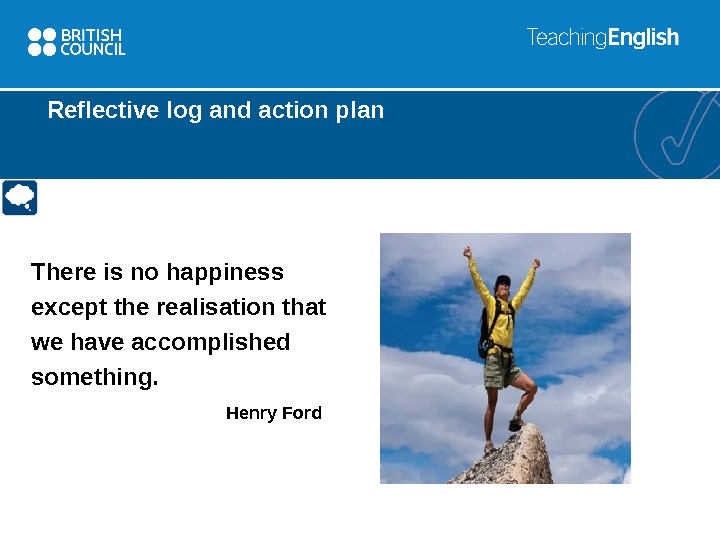
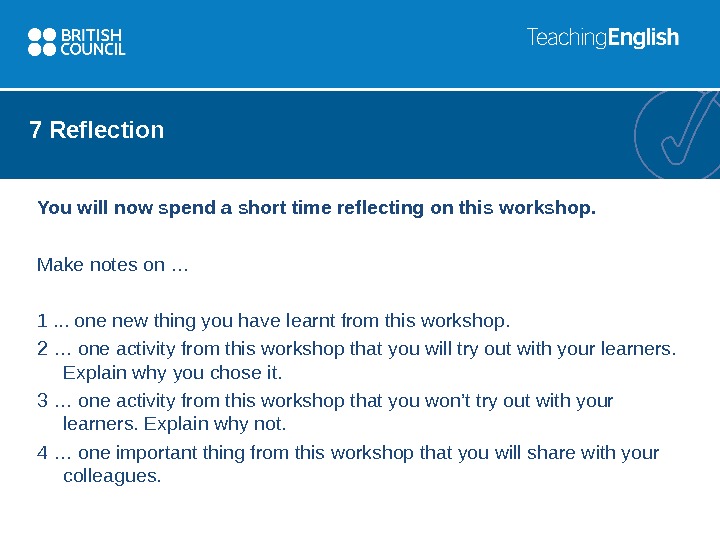
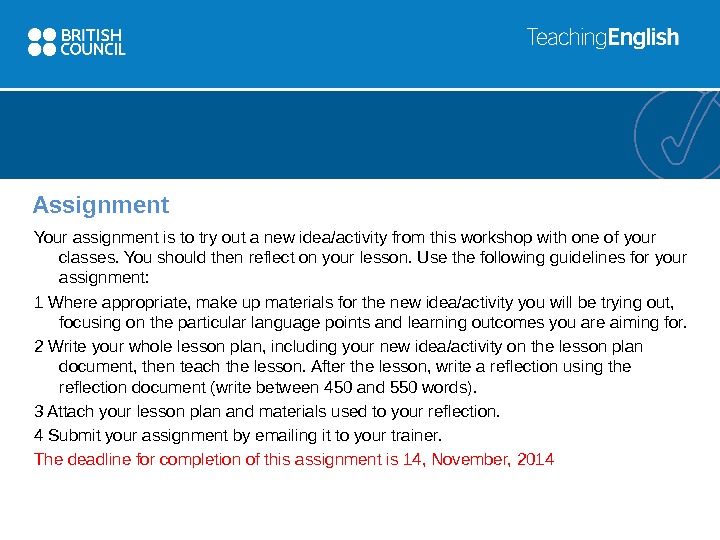
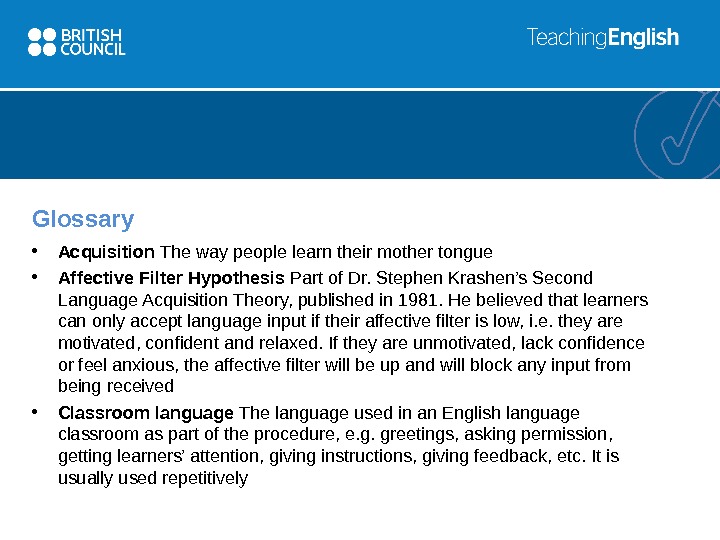
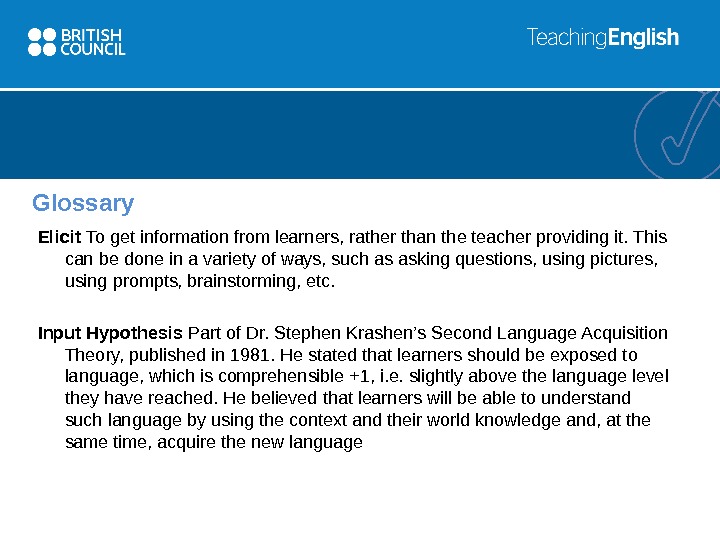
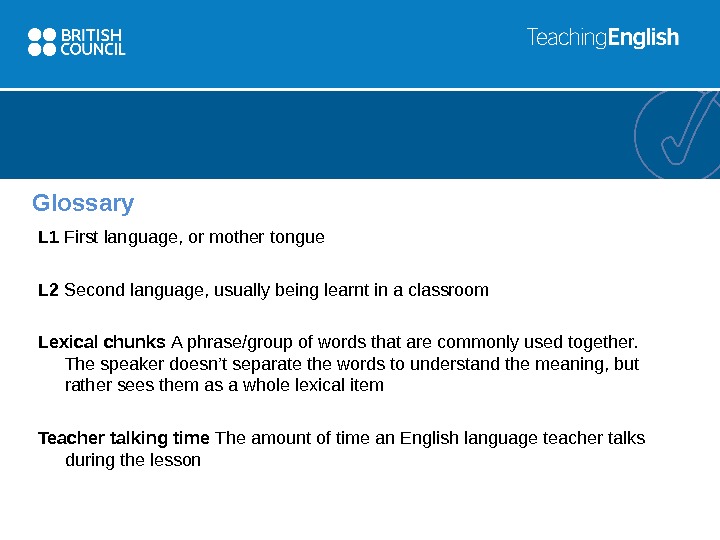
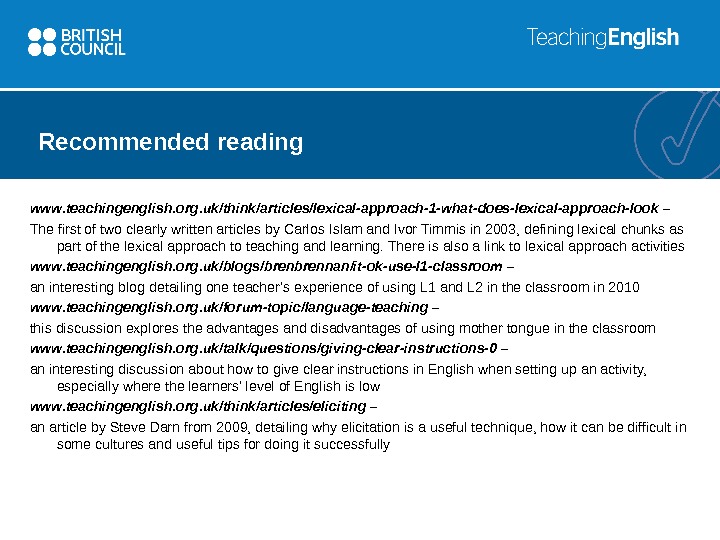
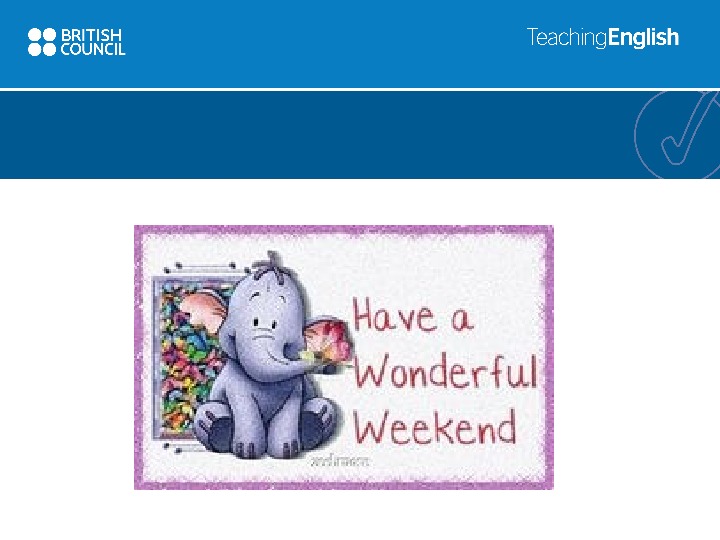
ciselt_2.4_classroom_language.ppt
- Размер: 2.4 Mегабайта
- Количество слайдов: 35
Описание презентации Teaching English Certificate in Secondary English Language Teaching по слайдам
 Teaching English Certificate in Secondary English Language Teaching (Ci. SELT)
Teaching English Certificate in Secondary English Language Teaching (Ci. SELT)
 Please turn your phone OFF!
Please turn your phone OFF!
 Getting to know your trainer My name is Larissa. My daughter’s 22 and my son’s almost one. I’ve been working for Language Link as a DOS for several years. I live in Moscow.
Getting to know your trainer My name is Larissa. My daughter’s 22 and my son’s almost one. I’ve been working for Language Link as a DOS for several years. I live in Moscow.
 Learning outcomes By the end of this workshop you will have/be able to: • explain how classroom language aids acquisition • consider when L 1 or L 2 is more beneficial for learners in the classroom • teach classroom language in context and help learners to practise it • give instructions for various activities effectively.
Learning outcomes By the end of this workshop you will have/be able to: • explain how classroom language aids acquisition • consider when L 1 or L 2 is more beneficial for learners in the classroom • teach classroom language in context and help learners to practise it • give instructions for various activities effectively.
 Contents This workshop consists of seven sections: 1 What is classroom language? 2 Why use English? 3 When to use mother tongue 4 How to teach classroom language 5 Teacher talking time 6 Setting up an activity 7 Reflection There is also an assignment , putting the ideas explored in this workshop into practice, a glossary and recommended reading.
Contents This workshop consists of seven sections: 1 What is classroom language? 2 Why use English? 3 When to use mother tongue 4 How to teach classroom language 5 Teacher talking time 6 Setting up an activity 7 Reflection There is also an assignment , putting the ideas explored in this workshop into practice, a glossary and recommended reading.
 1 What is classroom language?
1 What is classroom language?
 1. 2 Definition ‘ Classroom language is any chunk spoken (or written) in the classroom by the teacher or learners, which facilitates the procedure of the lesson. It is usually used repetitively. ’
1. 2 Definition ‘ Classroom language is any chunk spoken (or written) in the classroom by the teacher or learners, which facilitates the procedure of the lesson. It is usually used repetitively. ’
 2. 1 – Lexical chunks The importance of classroom language Young children 1. (e) acquire their mother tongue through constant exposure to and usage of language. 2. (a) It is widely believed that lexical chunks, or commonly used phrases, aid acquisition. By hearing chunks of language used in relevant contexts many times, young children 3. (h) come to understand the meaning of each chunk. Eventually they are able to produce the phrases themselves in appropriate contexts to express themselves accurately. These children do not analyse the grammar of such chunks – they just know 4. (b) when and where to use them, through repetition and successful usage. Learners of second languages can also acquire lexical chunks in the same way. 5. (c) An additional benefit of lexical chunks is how they aid fluency. By having a store of such chunks 6. (d) on the tip of the tongue , speakers don’t have to think so hard about every word they say, which would slow down speech. They can produce the appropriate chunk at the appropriate time without much thought, and so concentrate on other aspects of speech, which may 7. (g) need fine-tuning , such as grammar and discourse.
2. 1 – Lexical chunks The importance of classroom language Young children 1. (e) acquire their mother tongue through constant exposure to and usage of language. 2. (a) It is widely believed that lexical chunks, or commonly used phrases, aid acquisition. By hearing chunks of language used in relevant contexts many times, young children 3. (h) come to understand the meaning of each chunk. Eventually they are able to produce the phrases themselves in appropriate contexts to express themselves accurately. These children do not analyse the grammar of such chunks – they just know 4. (b) when and where to use them, through repetition and successful usage. Learners of second languages can also acquire lexical chunks in the same way. 5. (c) An additional benefit of lexical chunks is how they aid fluency. By having a store of such chunks 6. (d) on the tip of the tongue , speakers don’t have to think so hard about every word they say, which would slow down speech. They can produce the appropriate chunk at the appropriate time without much thought, and so concentrate on other aspects of speech, which may 7. (g) need fine-tuning , such as grammar and discourse.
 2. 2 – Conclusion It makes sense then, that teachers of English as a foreign language should use lexical chunks in the classroom as much as possible. Classroom language, such as greetings, instructions, giving feedback, etc. contains examples of lexical chunks and tends to be used repetitively in context. If such language is said in English, learners will gradually acquire these phrases in the same way as a native speaker would. Learners should also be encouraged to use such phrases themselves, in order to aid fluency.
2. 2 – Conclusion It makes sense then, that teachers of English as a foreign language should use lexical chunks in the classroom as much as possible. Classroom language, such as greetings, instructions, giving feedback, etc. contains examples of lexical chunks and tends to be used repetitively in context. If such language is said in English, learners will gradually acquire these phrases in the same way as a native speaker would. Learners should also be encouraged to use such phrases themselves, in order to aid fluency.
 2. 3 – My classroom language Greeting: “ Hello. How are you doing? ” “ Hi. Did you have a good weekend? ” Getting learners’ attention: “ Stop, look and listen now, please. ” “ Class 4 F – pay attention now, please. ” Asking for permission: “ Can I drink some water, please? ” “ Is it OK if I work with John? ” Asking for clarification: “ I’m sorry, I didn’t catch that? ” “ I didn’t understand the last part. ” Doing pair work: “ Find a partner, please. ” “ OK – change over now. ” Playing a game: “ First roll the die. ” “ Move your counter along four spaces. ” Giving feedback: “ Good try, but not quite right. ” “ Much better – keep going. ” Saying goodbye: “ See you tomorrow. ” “ Have a good weekend. ”
2. 3 – My classroom language Greeting: “ Hello. How are you doing? ” “ Hi. Did you have a good weekend? ” Getting learners’ attention: “ Stop, look and listen now, please. ” “ Class 4 F – pay attention now, please. ” Asking for permission: “ Can I drink some water, please? ” “ Is it OK if I work with John? ” Asking for clarification: “ I’m sorry, I didn’t catch that? ” “ I didn’t understand the last part. ” Doing pair work: “ Find a partner, please. ” “ OK – change over now. ” Playing a game: “ First roll the die. ” “ Move your counter along four spaces. ” Giving feedback: “ Good try, but not quite right. ” “ Much better – keep going. ” Saying goodbye: “ See you tomorrow. ” “ Have a good weekend. ”
 3 When to use mother tongue
3 When to use mother tongue
 When to use mother tongue Conclusion Teachers should use L 2 as much as possible in order to help learners acquire English, but if learners would benefit more from L 1, such as in an emergency situation or when English will not help them understand, then use L 1. However, do not use L 1 because it is easiest in the short term. Think longer term – it may take learners longer to understand at first if L 2 if used, but the more it is used, the easier it will get for them.
When to use mother tongue Conclusion Teachers should use L 2 as much as possible in order to help learners acquire English, but if learners would benefit more from L 1, such as in an emergency situation or when English will not help them understand, then use L 1. However, do not use L 1 because it is easiest in the short term. Think longer term – it may take learners longer to understand at first if L 2 if used, but the more it is used, the easier it will get for them.
 4 How to teach classroom language 1 — c) A learner is doing a writing activity and asks the teacher how to spell a word, using L 1. 2 — e) The teacher gets the attention of the whole class and explains that one of the learners needs to know how to spell a word. 3 — a) The teacher elicits “How do you spell it? ” from the whole class. 4 — h) The teacher drills the question with the whole class, paying attention to the correct pronunciation of “do you”, which is elided (pushed together). 5 — f) The teacher invites a learner to write the question on the board, and elicits corrections if necessary. 6 — d) The teacher asks each learner to think of a word and ask his or her partner how to spell it, in order to practise the question. 7 — g) The teacher elicits what other language the learners may need when doing the given activity (e. g. What does this mean? How do you say that? ), and follows the same teaching procedure for each chunk of language. 8 — b) The teacher asks the learners to resume the writing activity, reminding them to use English whenever possible.
4 How to teach classroom language 1 — c) A learner is doing a writing activity and asks the teacher how to spell a word, using L 1. 2 — e) The teacher gets the attention of the whole class and explains that one of the learners needs to know how to spell a word. 3 — a) The teacher elicits “How do you spell it? ” from the whole class. 4 — h) The teacher drills the question with the whole class, paying attention to the correct pronunciation of “do you”, which is elided (pushed together). 5 — f) The teacher invites a learner to write the question on the board, and elicits corrections if necessary. 6 — d) The teacher asks each learner to think of a word and ask his or her partner how to spell it, in order to practise the question. 7 — g) The teacher elicits what other language the learners may need when doing the given activity (e. g. What does this mean? How do you say that? ), and follows the same teaching procedure for each chunk of language. 8 — b) The teacher asks the learners to resume the writing activity, reminding them to use English whenever possible.
 How can the teacher help learners to remember and practise the classroom language? • Prepare large flashcards to post on the wall in subsequent lessons; • have the learners prepare such flashcards; • prepare a matching activity where learners match the chunks to situations they are used in (i. e. “May I be excused? ” = Asking permission); cut chunks in half for learners to match up correctly; • remind learners to use the classroom language when setting up activities – elicit examples from them; • praise learners for using classroom language in English; be a good model yourself – USE CLASSROOM LANGUAGE in ENGLISH.
How can the teacher help learners to remember and practise the classroom language? • Prepare large flashcards to post on the wall in subsequent lessons; • have the learners prepare such flashcards; • prepare a matching activity where learners match the chunks to situations they are used in (i. e. “May I be excused? ” = Asking permission); cut chunks in half for learners to match up correctly; • remind learners to use the classroom language when setting up activities – elicit examples from them; • praise learners for using classroom language in English; be a good model yourself – USE CLASSROOM LANGUAGE in ENGLISH.
 5 Teacher talking time Do you agree with either of these teachers? Give reasons for your views. Do you agree with either of these teachers? Give reasons for your views.
5 Teacher talking time Do you agree with either of these teachers? Give reasons for your views. Do you agree with either of these teachers? Give reasons for your views.
 6. 1 – Giving instructions board game How can you win? What happens if you land on a question mark? Who reads the card?
6. 1 – Giving instructions board game How can you win? What happens if you land on a question mark? Who reads the card?
 6. 2 – Dos and don’ts a) Demonstrate, rather than explain an activity, if possible. b) Make sure all the learners can see the demonstration before you start. c) Elicit as much information from the learners as possible. f) Use language that learners will be able to understand easily. g) Give out materials before you give the instructions. h) Give instructions in stages if necessary. i) Use confident learners with a higher level of English to demonstrate activities l) Check that learners have understood your instructions by asking specific questions about the activity procedure. o) Only give instructions if necessary – some activities can be learnt while doing, others don’t need instructions. Do …
6. 2 – Dos and don’ts a) Demonstrate, rather than explain an activity, if possible. b) Make sure all the learners can see the demonstration before you start. c) Elicit as much information from the learners as possible. f) Use language that learners will be able to understand easily. g) Give out materials before you give the instructions. h) Give instructions in stages if necessary. i) Use confident learners with a higher level of English to demonstrate activities l) Check that learners have understood your instructions by asking specific questions about the activity procedure. o) Only give instructions if necessary – some activities can be learnt while doing, others don’t need instructions. Do …
 Don’t … 6. 2 – Dos and don’ts d) … explain the whole activity before learners begin, especially if it is a long and complicated one. e) …use language that is above the learners’ level. j) …give out materials after you give the instructions. k) …save time by producing all the information yourself. m) …ask learners “Do you understand? ” at the end of your instructions. n) …always have an instruction-giving stage, no matter what the activity.
Don’t … 6. 2 – Dos and don’ts d) … explain the whole activity before learners begin, especially if it is a long and complicated one. e) …use language that is above the learners’ level. j) …give out materials after you give the instructions. k) …save time by producing all the information yourself. m) …ask learners “Do you understand? ” at the end of your instructions. n) …always have an instruction-giving stage, no matter what the activity.
 6. 3 – Practice Now it’s your turn to practise giving instructions. Plan how to give instructions for the activities you’ve been given below. Remember to follow the Dos in Activity 6. 2 and not the Don’ts!
6. 3 – Practice Now it’s your turn to practise giving instructions. Plan how to give instructions for the activities you’ve been given below. Remember to follow the Dos in Activity 6. 2 and not the Don’ts!
 1. Hot seat – for reviewing vocabulary Put learners into teams. One member of each team comes out to the front and sits on a chair (hot seat) with her/his back to the board. These learners have to guess which word is written on the board behind them, without seeing it. Their team members, who can see the word on the board, have to give them clues, either by using other words or by miming. The first learner in a hot seat to guess the word correctly gets a point for her/his team. Once a word is guessed correctly, the team members can swap roles. 6. 3 – Practice
1. Hot seat – for reviewing vocabulary Put learners into teams. One member of each team comes out to the front and sits on a chair (hot seat) with her/his back to the board. These learners have to guess which word is written on the board behind them, without seeing it. Their team members, who can see the word on the board, have to give them clues, either by using other words or by miming. The first learner in a hot seat to guess the word correctly gets a point for her/his team. Once a word is guessed correctly, the team members can swap roles. 6. 3 – Practice
 2. Mingle and swap – for practising questions and answers Each learner has a strip of paper with a different question on it. All the learners should stand ask a partner the question on their paper. The partner should answer that question, then ask the first learner the question on her/his strip of paper, which the first learner should answer. The two learners should then swap strips of paper and mingle to ask their new question to a new partner. Once both questions have been asked answered, partners swap strips and find another partner, and so on. Suggested questions: getting to know you questions; “Have you ever…? ” questions; questions about sport/food/pop stars, etc. Prepare these yourself on strips of paper. 6. 3 – Practice
2. Mingle and swap – for practising questions and answers Each learner has a strip of paper with a different question on it. All the learners should stand ask a partner the question on their paper. The partner should answer that question, then ask the first learner the question on her/his strip of paper, which the first learner should answer. The two learners should then swap strips of paper and mingle to ask their new question to a new partner. Once both questions have been asked answered, partners swap strips and find another partner, and so on. Suggested questions: getting to know you questions; “Have you ever…? ” questions; questions about sport/food/pop stars, etc. Prepare these yourself on strips of paper. 6. 3 – Practice
 3. Describe and draw pair work – for practising describing a scene. Learners work in pairs. Each partner is given the same simple drawing of a scene, e. g. an outline of a bedroom with a few features: a door, a window. Learners are asked to add more features to the scene (design their ideal bedroom), e. g. a bed, a chair, TV, games, spa, etc. Learners must not see their partners’ pictures. When the drawing is finished, Learner A should describe her/his picture to Learner B, who should re-draw her/his partner’s scene. The partners then swap roles. At the end, partners show their pictures to each other to see if they drew them accurately. 6. 3 – Practice
3. Describe and draw pair work – for practising describing a scene. Learners work in pairs. Each partner is given the same simple drawing of a scene, e. g. an outline of a bedroom with a few features: a door, a window. Learners are asked to add more features to the scene (design their ideal bedroom), e. g. a bed, a chair, TV, games, spa, etc. Learners must not see their partners’ pictures. When the drawing is finished, Learner A should describe her/his picture to Learner B, who should re-draw her/his partner’s scene. The partners then swap roles. At the end, partners show their pictures to each other to see if they drew them accurately. 6. 3 – Practice
 4. Happy families – for practising vocabulary Learners should play in small groups of three or four. The objective of the game is to collect the most sets of the same picture card – a set is four cards. Shuffle the cards and deal out all cards to the players equally. Decide who goes first. The first player may ask any other player for a certain card, e. g. “Sarah, please may I have a pencil sharpener? ” Sarah should pass over a pencil sharpener if she has one (“Yes, here you are. ”) or apologise if she hasn’t (“Sorry, I haven’t got any sharpeners. ”). If the first player’s request was successful, s/he may have another turn. If unsuccessful, her/his turn ends and the next player makes a request. Whenever a player manages to collect four cards with the same picture on, s/he may lay the set down on the table. The game finishes when all sets have been collected and the winner is the player with the most sets. 6. 3 – Practice
4. Happy families – for practising vocabulary Learners should play in small groups of three or four. The objective of the game is to collect the most sets of the same picture card – a set is four cards. Shuffle the cards and deal out all cards to the players equally. Decide who goes first. The first player may ask any other player for a certain card, e. g. “Sarah, please may I have a pencil sharpener? ” Sarah should pass over a pencil sharpener if she has one (“Yes, here you are. ”) or apologise if she hasn’t (“Sorry, I haven’t got any sharpeners. ”). If the first player’s request was successful, s/he may have another turn. If unsuccessful, her/his turn ends and the next player makes a request. Whenever a player manages to collect four cards with the same picture on, s/he may lay the set down on the table. The game finishes when all sets have been collected and the winner is the player with the most sets. 6. 3 – Practice
 Team tic-tac-toe (noughts and crosses) – for practising describing. Find a set of nine different pictures of similar scenes/things, e. g. fashion models/street scenes/football games, etc. Divide the whole class into two teams, and ask each team to choose a colour (e. g. red and blue). Stick the pictures on the board in three rows of three and give the learners two minutes to look at them and commit as many details as possible to memory. After two minutes, turn the pictures over and stick back on the board in the same positions as before. Now play tic-tac-toe. The red team should choose one of the pictures (put numbers on the back so it’s easy to pick them) and say three things about that picture from memory, e. g. “She has long dark hair/ she’s wearing a black dress/ she’s carrying an orange handbag. ” The learners in the red team can help each other to remember the three things. If they are successful, they win that picture – remove the picture and mark the space where it was red. If they can’t remember three things accurately, the blue team may have a turn. If the blue team is successful, mark the board blue. Teams take turns until one team has won three pictures in a row – horizontally, vertically or diagonally. So, teams should try to block their opponents as well as make a line themselves. 6. 3 – Practice
Team tic-tac-toe (noughts and crosses) – for practising describing. Find a set of nine different pictures of similar scenes/things, e. g. fashion models/street scenes/football games, etc. Divide the whole class into two teams, and ask each team to choose a colour (e. g. red and blue). Stick the pictures on the board in three rows of three and give the learners two minutes to look at them and commit as many details as possible to memory. After two minutes, turn the pictures over and stick back on the board in the same positions as before. Now play tic-tac-toe. The red team should choose one of the pictures (put numbers on the back so it’s easy to pick them) and say three things about that picture from memory, e. g. “She has long dark hair/ she’s wearing a black dress/ she’s carrying an orange handbag. ” The learners in the red team can help each other to remember the three things. If they are successful, they win that picture – remove the picture and mark the space where it was red. If they can’t remember three things accurately, the blue team may have a turn. If the blue team is successful, mark the board blue. Teams take turns until one team has won three pictures in a row – horizontally, vertically or diagonally. So, teams should try to block their opponents as well as make a line themselves. 6. 3 – Practice
 Who am I? – for practising asking yes/no questions Prepare one sticky label for each learner. On each label should be written a different animal, or famous person, or occupation. Each learner has one of the labels stuck on her/his back, but doesn’t know what their word is. Each learner has to guess the word on their back by collecting clues. They do this by asking yes/no questions to other learners, such as “Do I work indoors? ”, “Do I wear a uniform? ” etc. Open-ended questions, such as “What do I wear? ” are not allowed. The learners stand up and mingle to ask the questions. When they guess their word correctly, they may sit down. 6. 3 – Practice
Who am I? – for practising asking yes/no questions Prepare one sticky label for each learner. On each label should be written a different animal, or famous person, or occupation. Each learner has one of the labels stuck on her/his back, but doesn’t know what their word is. Each learner has to guess the word on their back by collecting clues. They do this by asking yes/no questions to other learners, such as “Do I work indoors? ”, “Do I wear a uniform? ” etc. Open-ended questions, such as “What do I wear? ” are not allowed. The learners stand up and mingle to ask the questions. When they guess their word correctly, they may sit down. 6. 3 – Practice
 Pair work crossword – for reviewing vocabulary Learners work in pairs. Learner A has a crossword puzzle with half of the words completed, but no clues. Learner B has the same crossword puzzle with the other half of the words completed, but no clues. Each learner must not see his or her partner’s crossword. Learners take turns to ask for clues for their missing words, e. g. Learner A asks: “What’s 1 down? ” Learner B has the missing word but must not give that word to Learner A. Learner B must instead give Learner A a clue, e. g. “It’s a long, wooden seat. ” Learner A has to guess the word (which is ‘bench’) and write it in the correct place in the crossword puzzle. Then Learner B asks Learner A for a clue: “What’s 1 across? ”. Learner A gives Learner B a clue, and so on, until both crosswords are completed. 6. 3 – Practice
Pair work crossword – for reviewing vocabulary Learners work in pairs. Learner A has a crossword puzzle with half of the words completed, but no clues. Learner B has the same crossword puzzle with the other half of the words completed, but no clues. Each learner must not see his or her partner’s crossword. Learners take turns to ask for clues for their missing words, e. g. Learner A asks: “What’s 1 down? ” Learner B has the missing word but must not give that word to Learner A. Learner B must instead give Learner A a clue, e. g. “It’s a long, wooden seat. ” Learner A has to guess the word (which is ‘bench’) and write it in the correct place in the crossword puzzle. Then Learner B asks Learner A for a clue: “What’s 1 across? ”. Learner A gives Learner B a clue, and so on, until both crosswords are completed. 6. 3 – Practice
 Go fish – for practising vocabulary Learners should play in small groups of three or four. The object of the game is to collect the most sets of the same picture card – a set is four cards. Shuffle the cards and deal five cards to each player. The remaining cards should be placed face down in a pile on the table. Players should look at their own cards, but not let other players see them. The first player can ask any other player for cards that s/he wants to collect, e. g. “Sammy, can I have the pencil sharpeners, please? ” The player can only collect cards if they already have at least one of the sets in their hand. Sammy must give all the cards requested (in this case, pencil sharpeners) to the first player, if he is holding any (“Here you are”). The first player then has another turn. However, if Sammy doesn’t have any of the requested cards, he says “No, sorry. Go fish!” The first player then takes the top card from the pile in the middle and adds it to their hand her/his turn now ends. Play passes to the player who said, “Go fish!” (not necessarily the player next to the first player). That player now asks another player for a set that s/he wants to collect, and so on. As soon as a player has collected a full set, s/he places all four cards on the table, and play continues. Play ends when all sets are collected – the player with the most sets is the winner. 6. 3 – Practice
Go fish – for practising vocabulary Learners should play in small groups of three or four. The object of the game is to collect the most sets of the same picture card – a set is four cards. Shuffle the cards and deal five cards to each player. The remaining cards should be placed face down in a pile on the table. Players should look at their own cards, but not let other players see them. The first player can ask any other player for cards that s/he wants to collect, e. g. “Sammy, can I have the pencil sharpeners, please? ” The player can only collect cards if they already have at least one of the sets in their hand. Sammy must give all the cards requested (in this case, pencil sharpeners) to the first player, if he is holding any (“Here you are”). The first player then has another turn. However, if Sammy doesn’t have any of the requested cards, he says “No, sorry. Go fish!” The first player then takes the top card from the pile in the middle and adds it to their hand her/his turn now ends. Play passes to the player who said, “Go fish!” (not necessarily the player next to the first player). That player now asks another player for a set that s/he wants to collect, and so on. As soon as a player has collected a full set, s/he places all four cards on the table, and play continues. Play ends when all sets are collected – the player with the most sets is the winner. 6. 3 – Practice
 Reflective log and action plan There is no happiness except the realisation that we have accomplished something. Henry Ford
Reflective log and action plan There is no happiness except the realisation that we have accomplished something. Henry Ford
 7 Reflection You will now spend a short time reflecting on this workshop. Make notes on … 1. . . one new thing you have learnt from this workshop. 2 … one activity from this workshop that you will try out with your learners. Explain why you chose it. 3 … one activity from this workshop that you won’t try out with your learners. Explain why not. 4 … one important thing from this workshop that you will share with your colleagues.
7 Reflection You will now spend a short time reflecting on this workshop. Make notes on … 1. . . one new thing you have learnt from this workshop. 2 … one activity from this workshop that you will try out with your learners. Explain why you chose it. 3 … one activity from this workshop that you won’t try out with your learners. Explain why not. 4 … one important thing from this workshop that you will share with your colleagues.
 Assignment Your assignment is to try out a new idea/activity from this workshop with one of your classes. You should then reflect on your lesson. Use the following guidelines for your assignment: 1 Where appropriate, make up materials for the new idea/activity you will be trying out, focusing on the particular language points and learning outcomes you are aiming for. 2 Write your whole lesson plan, including your new idea/activity on the lesson plan document, then teach the lesson. After the lesson, write a reflection using the reflection document (write between 450 and 550 words). 3 Attach your lesson plan and materials used to your reflection. 4 Submit your assignment by emailing it to your trainer. The deadline for completion of this assignment is 14, November,
Assignment Your assignment is to try out a new idea/activity from this workshop with one of your classes. You should then reflect on your lesson. Use the following guidelines for your assignment: 1 Where appropriate, make up materials for the new idea/activity you will be trying out, focusing on the particular language points and learning outcomes you are aiming for. 2 Write your whole lesson plan, including your new idea/activity on the lesson plan document, then teach the lesson. After the lesson, write a reflection using the reflection document (write between 450 and 550 words). 3 Attach your lesson plan and materials used to your reflection. 4 Submit your assignment by emailing it to your trainer. The deadline for completion of this assignment is 14, November,
 Glossary • Acquisition The way people learn their mother tongue • Affective Filter Hypothesis Part of Dr. Stephen Krashen’s Second Language Acquisition Theory, published in 1981. He believed that learners can only accept language input if their affective filter is low, i. e. they are motivated, confident and relaxed. If they are unmotivated, lack confidence or feel anxious, the affective filter will be up and will block any input from being received • Classroom language The language used in an English language classroom as part of the procedure, e. g. greetings, asking permission, getting learners’ attention, giving instructions, giving feedback, etc. It is usually used repetitively
Glossary • Acquisition The way people learn their mother tongue • Affective Filter Hypothesis Part of Dr. Stephen Krashen’s Second Language Acquisition Theory, published in 1981. He believed that learners can only accept language input if their affective filter is low, i. e. they are motivated, confident and relaxed. If they are unmotivated, lack confidence or feel anxious, the affective filter will be up and will block any input from being received • Classroom language The language used in an English language classroom as part of the procedure, e. g. greetings, asking permission, getting learners’ attention, giving instructions, giving feedback, etc. It is usually used repetitively
 Glossary Elicit To get information from learners, rather than the teacher providing it. This can be done in a variety of ways, such as asking questions, using pictures, using prompts, brainstorming, etc. Input Hypothesis Part of Dr. Stephen Krashen’s Second Language Acquisition Theory, published in 1981. He stated that learners should be exposed to language, which is comprehensible +1, i. e. slightly above the language level they have reached. He believed that learners will be able to understand such language by using the context and their world knowledge and, at the same time, acquire the new language
Glossary Elicit To get information from learners, rather than the teacher providing it. This can be done in a variety of ways, such as asking questions, using pictures, using prompts, brainstorming, etc. Input Hypothesis Part of Dr. Stephen Krashen’s Second Language Acquisition Theory, published in 1981. He stated that learners should be exposed to language, which is comprehensible +1, i. e. slightly above the language level they have reached. He believed that learners will be able to understand such language by using the context and their world knowledge and, at the same time, acquire the new language
 Glossary L 1 First language, or mother tongue L 2 Second language, usually being learnt in a classroom Lexical chunks A phrase/group of words that are commonly used together. The speaker doesn’t separate the words to understand the meaning, but rather sees them as a whole lexical item Teacher talking time The amount of time an English language teacher talks during the lesson
Glossary L 1 First language, or mother tongue L 2 Second language, usually being learnt in a classroom Lexical chunks A phrase/group of words that are commonly used together. The speaker doesn’t separate the words to understand the meaning, but rather sees them as a whole lexical item Teacher talking time The amount of time an English language teacher talks during the lesson
 Recommended reading www. teachingenglish. org. uk/think/articles/lexical-approach-1 -what-does-lexical-approach-look – The first of two clearly written articles by Carlos Islam and Ivor Timmis in 2003, defining lexical chunks as part of the lexical approach to teaching and learning. There is also a link to lexical approach activities www. teachingenglish. org. uk/blogs/brennan/it-ok-use-l 1 -classroom – an interesting blog detailing one teacher’s experience of using L 1 and L 2 in the classroom in 2010 www. teachingenglish. org. uk/forum-topic/language-teaching – this discussion explores the advantages and disadvantages of using mother tongue in the classroom www. teachingenglish. org. uk/talk/questions/giving-clear-instructions-0 – an interesting discussion about how to give clear instructions in English when setting up an activity, especially where the learners’ level of English is low www. teachingenglish. org. uk/think/articles/eliciting – an article by Steve Darn from 2009, detailing why elicitation is a useful technique, how it can be difficult in some cultures and useful tips for doing it successfully
Recommended reading www. teachingenglish. org. uk/think/articles/lexical-approach-1 -what-does-lexical-approach-look – The first of two clearly written articles by Carlos Islam and Ivor Timmis in 2003, defining lexical chunks as part of the lexical approach to teaching and learning. There is also a link to lexical approach activities www. teachingenglish. org. uk/blogs/brennan/it-ok-use-l 1 -classroom – an interesting blog detailing one teacher’s experience of using L 1 and L 2 in the classroom in 2010 www. teachingenglish. org. uk/forum-topic/language-teaching – this discussion explores the advantages and disadvantages of using mother tongue in the classroom www. teachingenglish. org. uk/talk/questions/giving-clear-instructions-0 – an interesting discussion about how to give clear instructions in English when setting up an activity, especially where the learners’ level of English is low www. teachingenglish. org. uk/think/articles/eliciting – an article by Steve Darn from 2009, detailing why elicitation is a useful technique, how it can be difficult in some cultures and useful tips for doing it successfully


